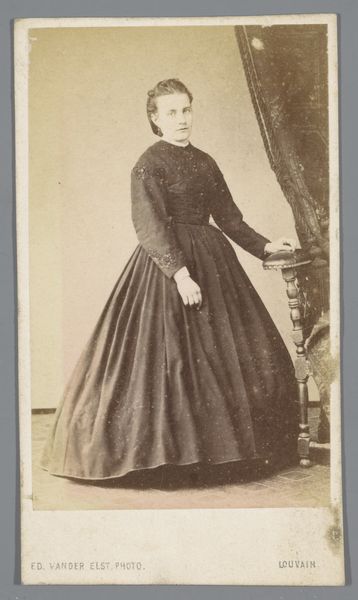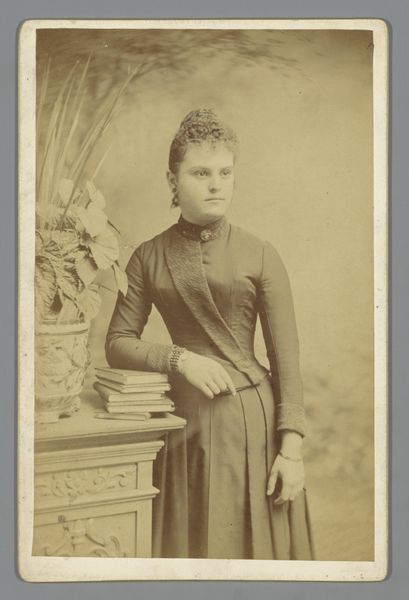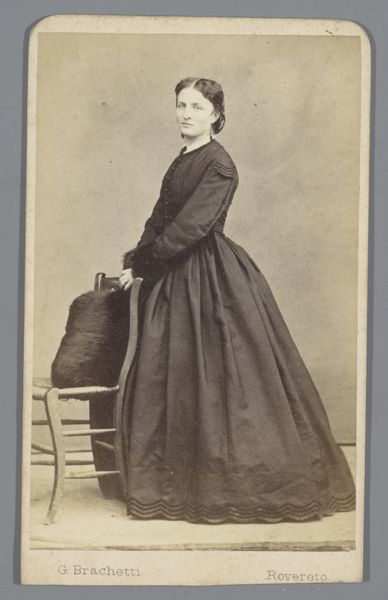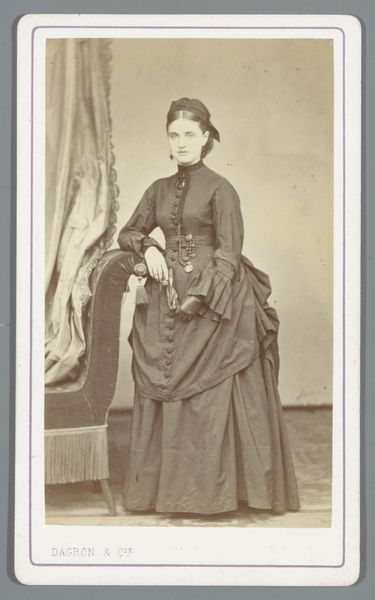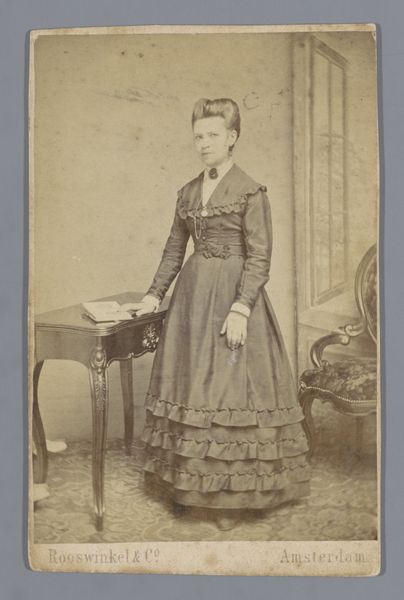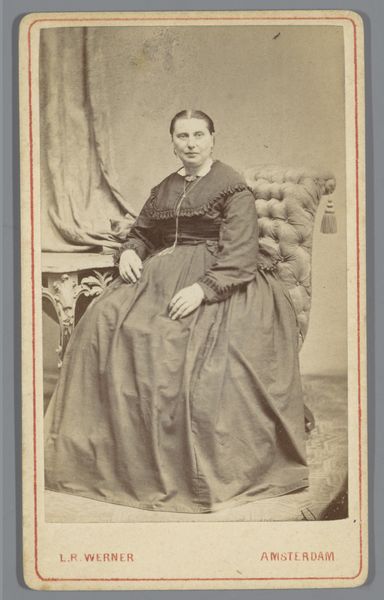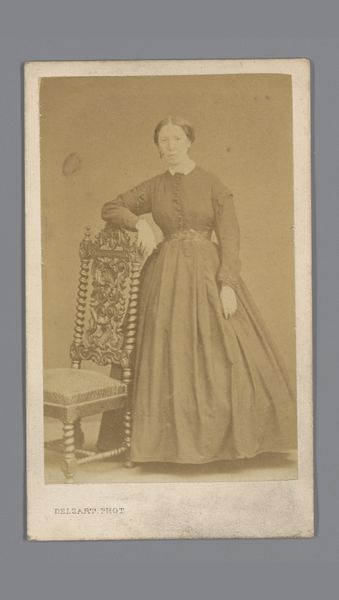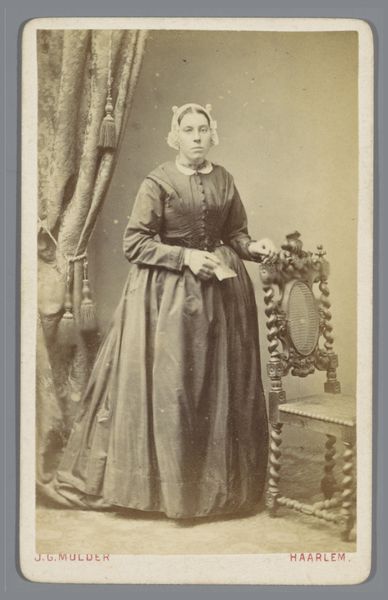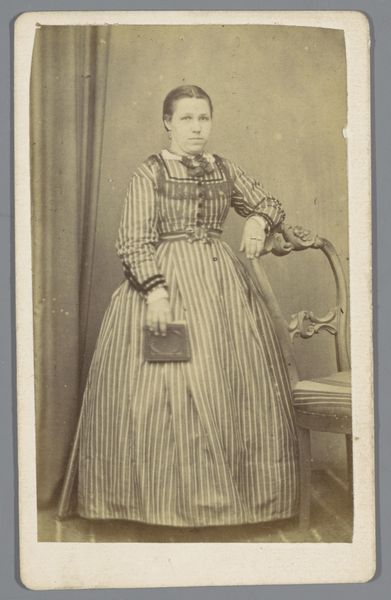
daguerreotype, photography
#
portrait
#
daguerreotype
#
photography
#
realism
Dimensions: height 102 mm, width 62 mm
Copyright: Rijks Museum: Open Domain
Curator: Looking at this daguerreotype from somewhere between 1855 and 1885 titled "Portret van een onbekende vrouw met paraplu" which translates to “Portrait of an unknown woman with umbrella,” what are your first thoughts? Editor: Immediately, I see a study in restraint. The palette is muted, and the woman's pose, while formal, has an underlying melancholy. I'm curious about what this portrait might communicate about gendered expectations in this period. Curator: Certainly. Photography in this era was becoming more accessible but was still laden with the codes of formal portraiture. The woman’s attire, her dark coat and bonnet, likely signified her middle-class status, but it also imposes a certain uniformity. The very act of commissioning a portrait was itself a social statement, an act of claiming space. Editor: Yes, but note how even in claiming that space, her power is mediated by that umbrella – a symbol of protection but also of confinement to domesticity and weather, both literally and figuratively. There's a duality here: she's visible, documented, yet also veiled by social conventions. The composition directs us to ponder the performance of femininity itself. Curator: The presence of the chair suggests stability and belonging, however. But when viewed from a political lens, do you interpret any challenge in her very steady gaze? Her slight hand placement perhaps signals resilience or quiet strength, while defying certain feminine norms. Editor: That’s astute. It encourages me to wonder how women could exert agency in a society keen on defining and limiting their roles. Her expression carries weight, I feel; perhaps because as the subject in photography she had no experience in controlling the final print’s outcome as compared to a painter. So her mere gaze already creates a different level of subversion by existing without necessarily adhering to those norms completely, while existing within a new technological form. Curator: Absolutely, and by contextualizing her existence through historical realities of gender expectations in art, we gain further appreciation not just of an unknown subject’s identity, but the realities of countless others within the same era who went unknown but still very much existent through art and other practices. Editor: Well, considering that angle it makes you contemplate just how radical simple existence can be through images of resistance in representation.
Comments
No comments
Be the first to comment and join the conversation on the ultimate creative platform.

